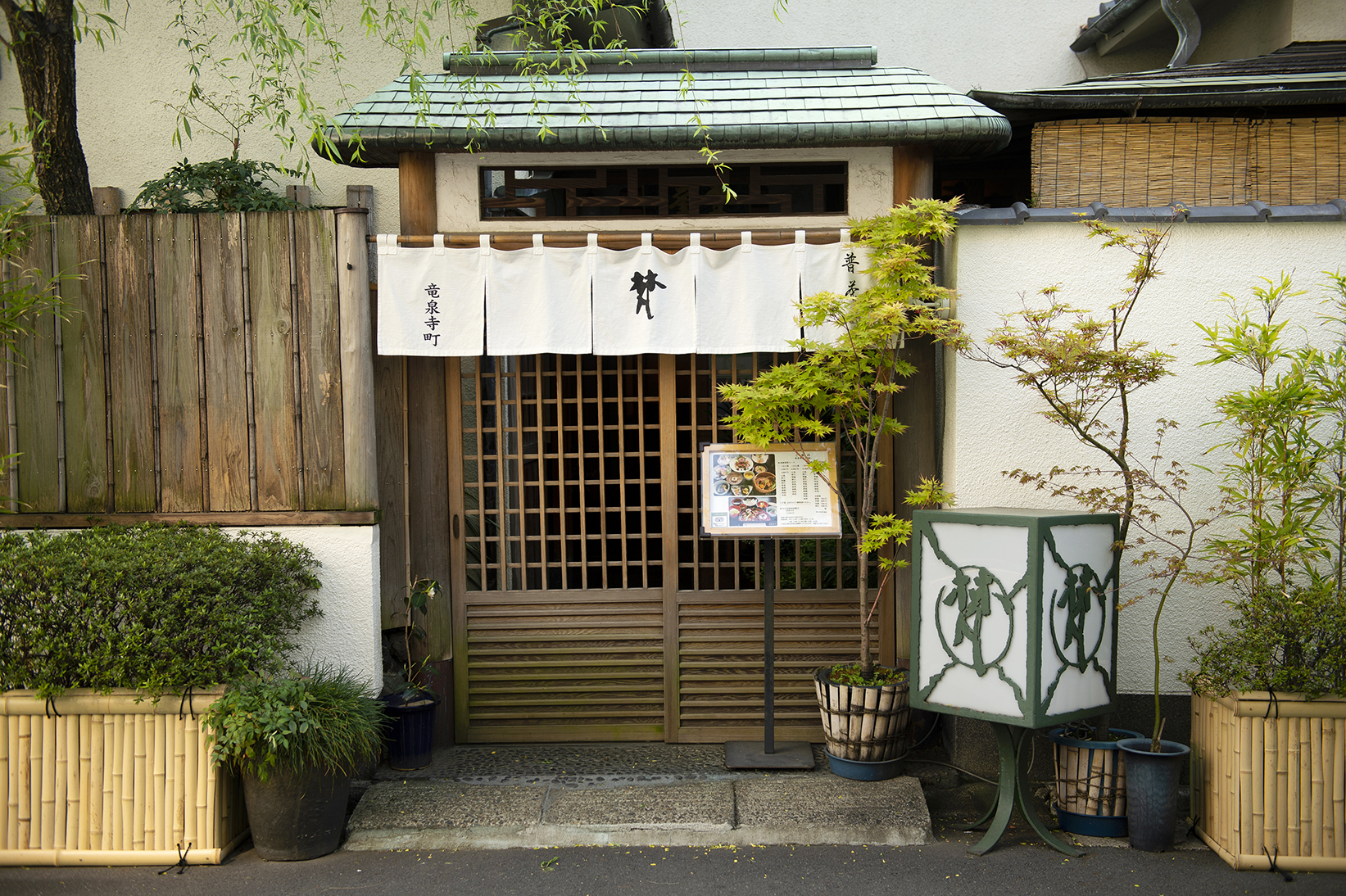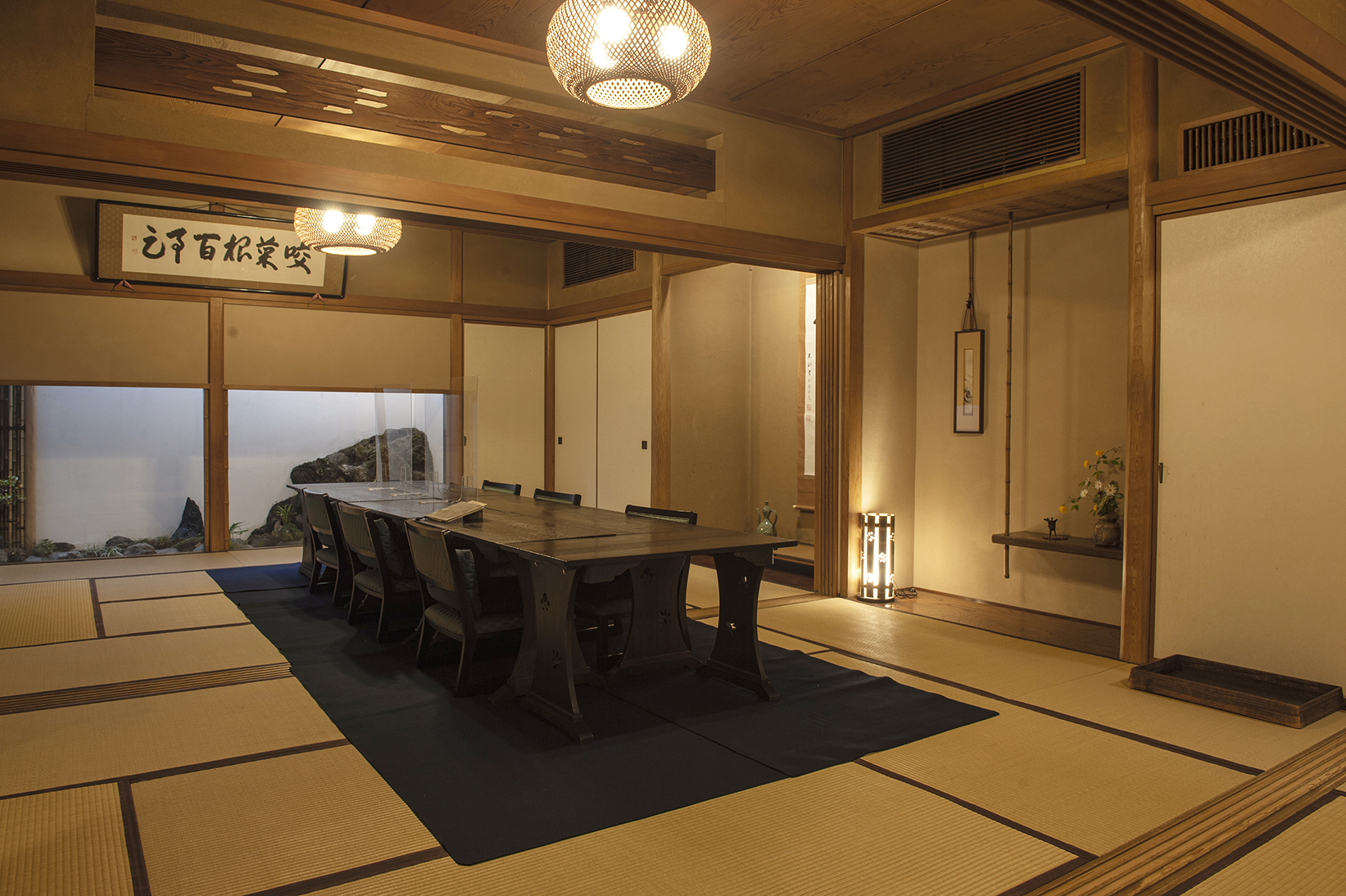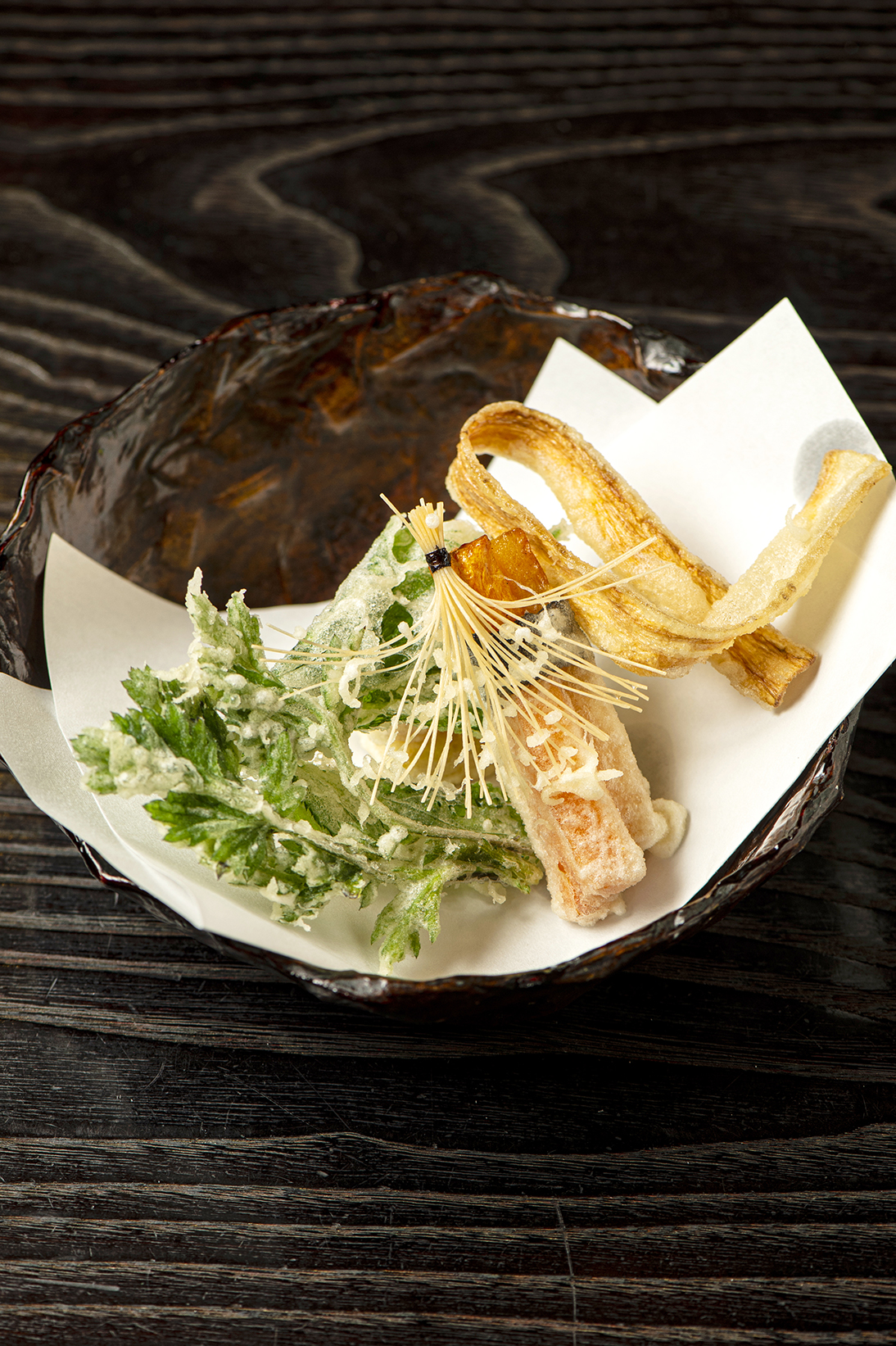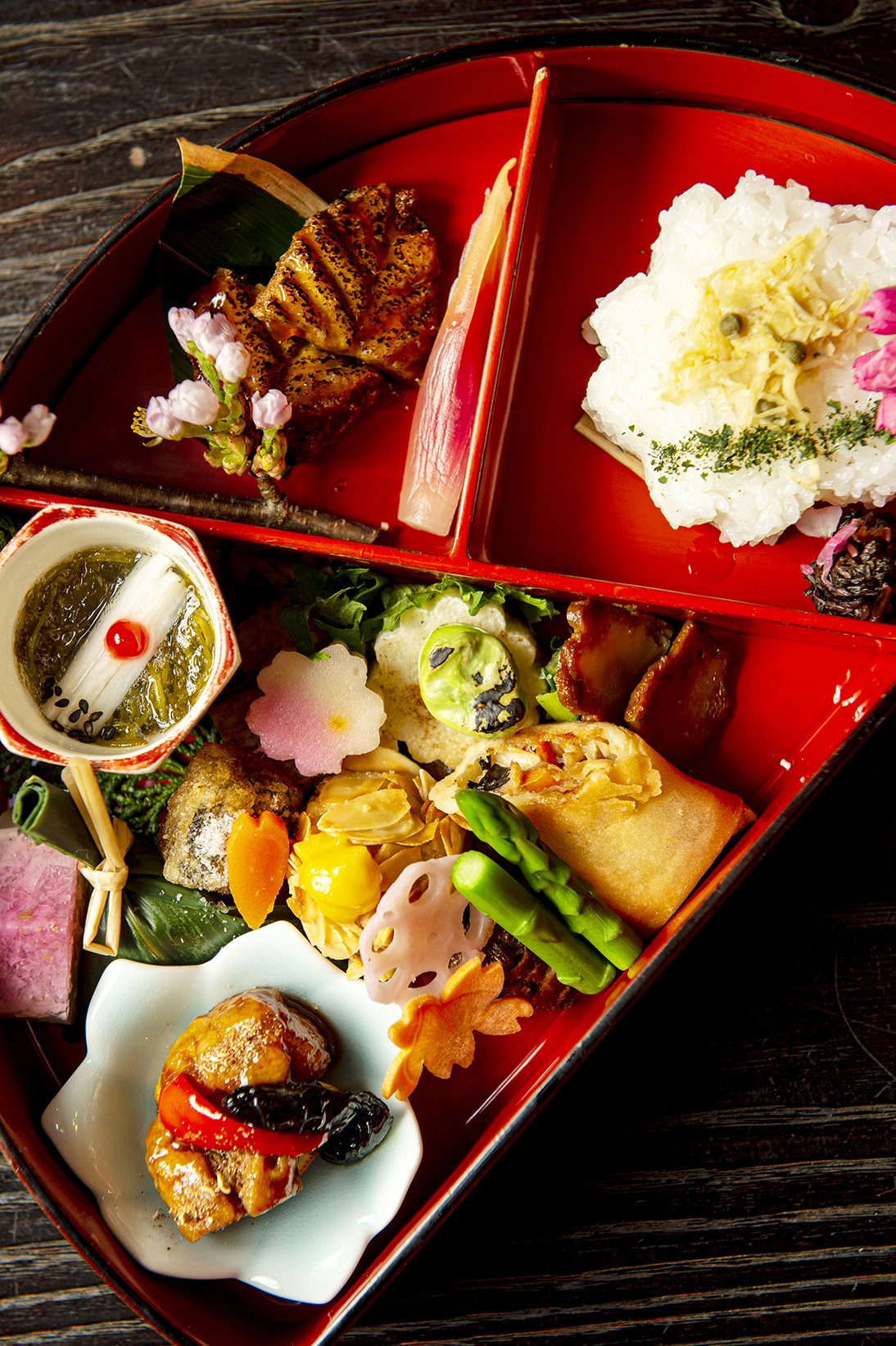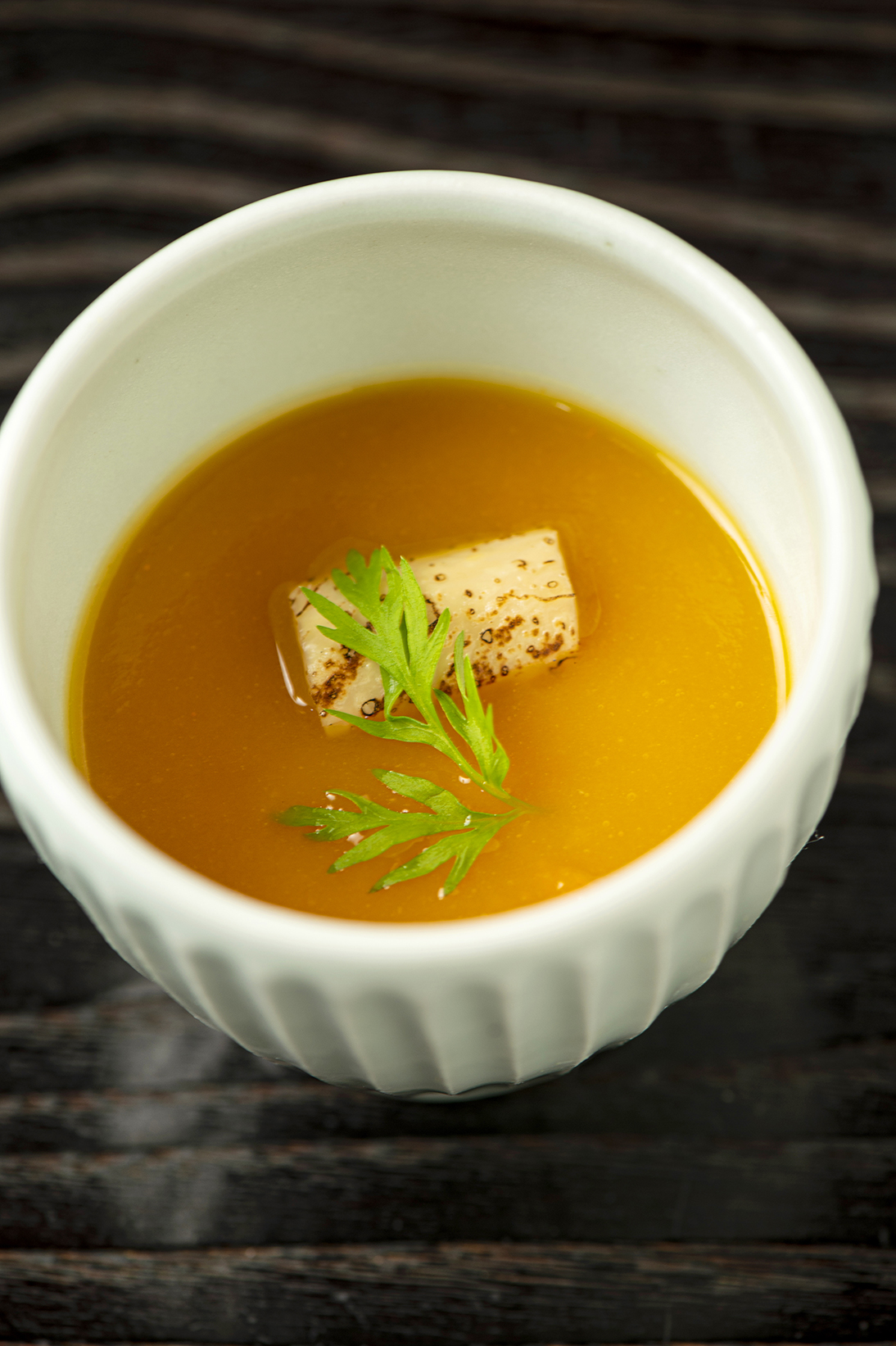”Ryusen" in Taito-ku is known as a place associated with Ichiyo Higuchi, a historical figure. "Fucha cuisine Bon" is located in a quite temple town.
"Fucha cuisine" was introduced during the early Edo era by the Zen Ingen (Ingen Zenshi), who brought it from Ming (China). The term "Fucha" embodies the idea of "serving tea and meals to all people equally". In a Fucha cuisine, there is no distinction between social classes, and everyone enjoys tea and food equally.
You can enjoy Fucha cuisine with Kaiseki-style dishes in an elegantly designed traditional tearoom. In addition, for those seeking a more casual dining experience, they also offer a popular menu "Fucha Bento box" for weekday lunch hours, for 3,450 yen (excluding tax and service charges).
Menu changes monthly. As for April, we could feel the Spring's Cherry Blossom viewing atmosphere from the dish.
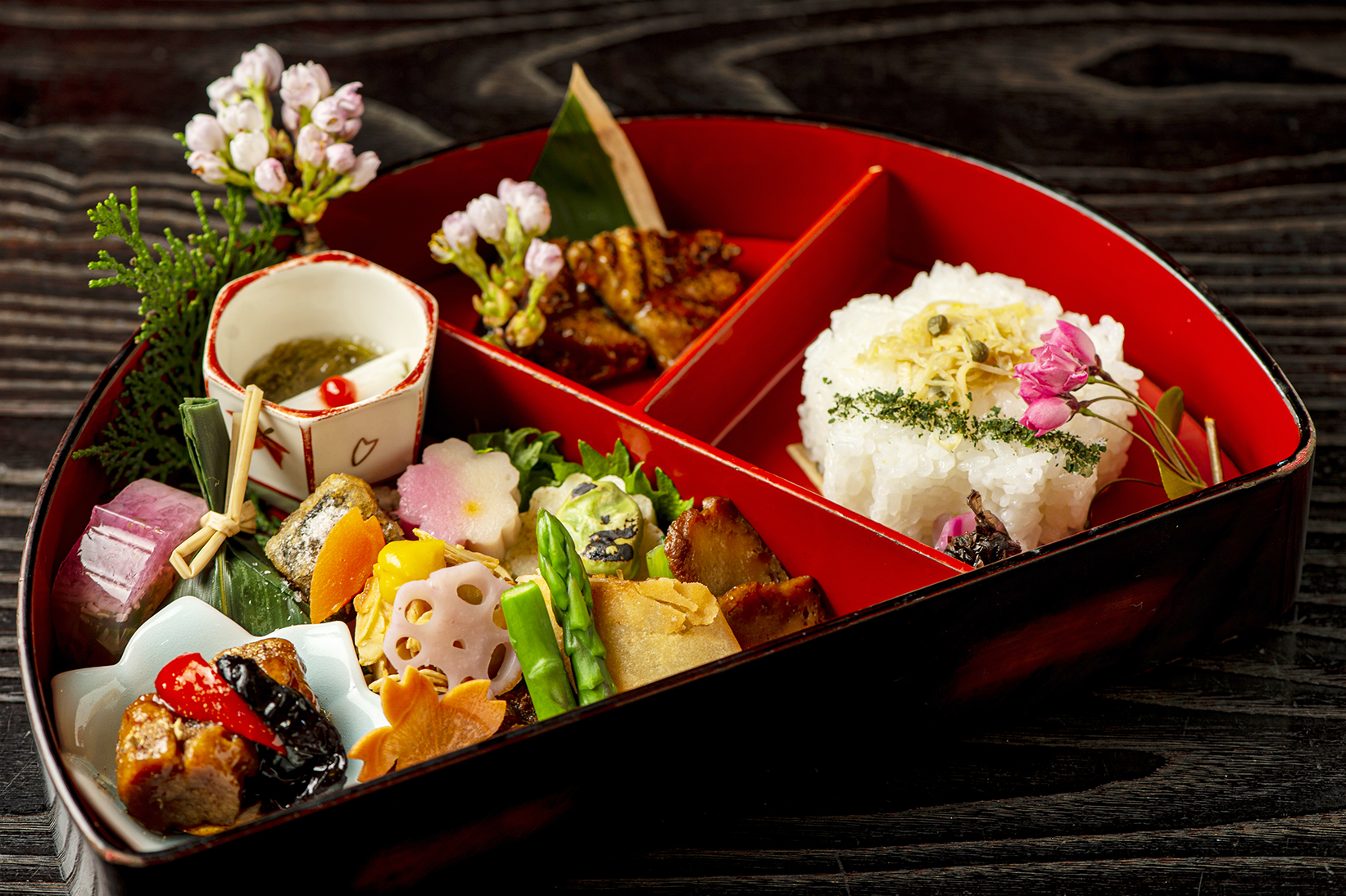
Deep taste of veggies in one plate
- Restaurant name
-
Fucha cuisine Bon
- Genre
-
Fucha cuisine (Shojin cuisine)
- A dish of goodness
-
Fucha lunch bento box
Beloved for 50 years,
What is the specialty Unagi-Tofu?
What is the specialty Unagi-Tofu?
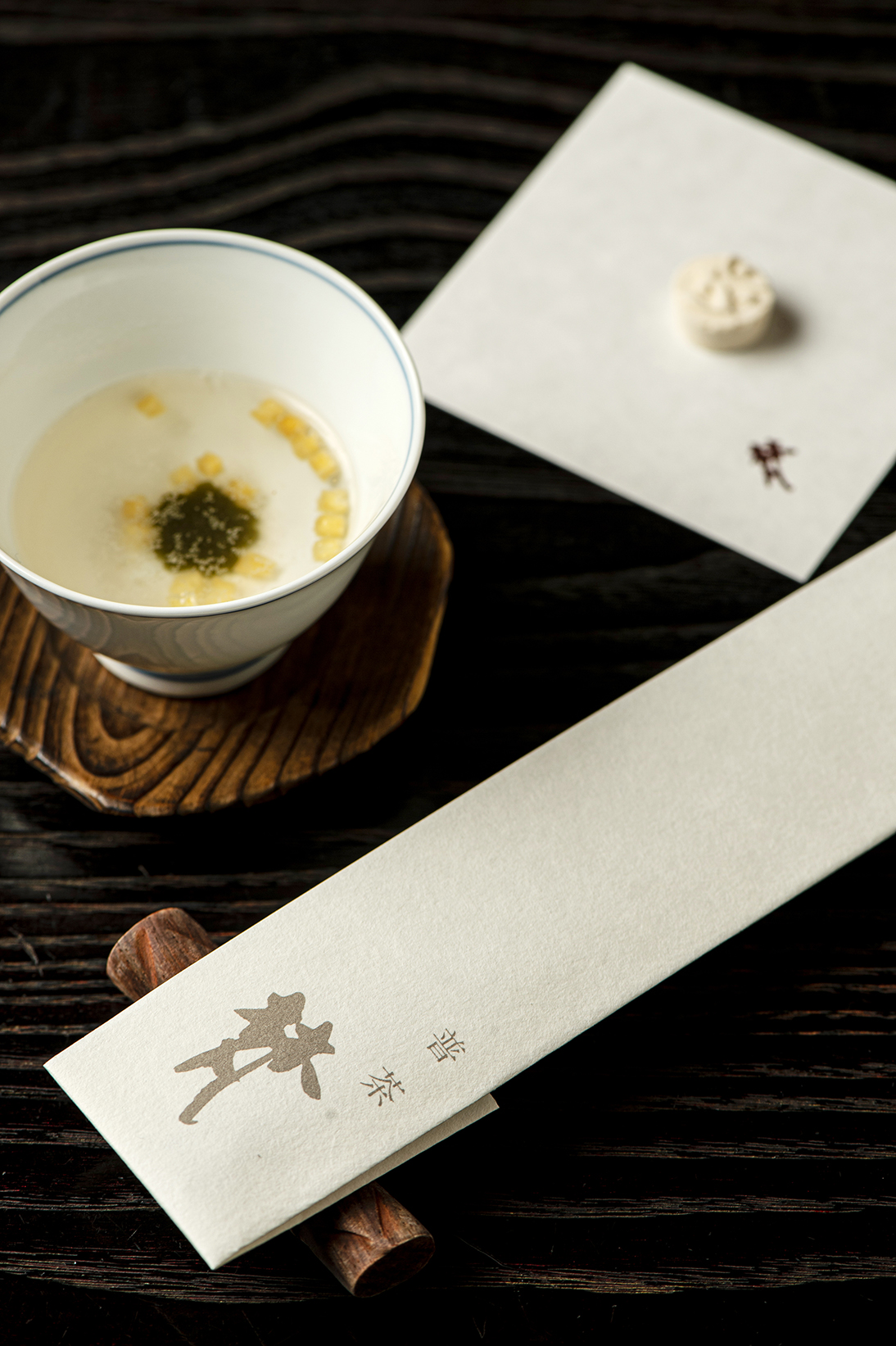
A meal starts from "Sarei: tea ceremony"
Ryuzo Furukawa san, the second-generation owner explained, "In the tea ceremony, the act of sharing tea signifies coming together as one, where individuals in the same table drink tea together and unite their hearts. It's similar to cheering with beer; it's a way to commence the meal with our hearts in harmony." Furukawa san, along with his wife and his son and his son's wife, continues to uphold the legacy passed down from the previous generation.
The tea ceremony on this day featured Sakura Kosencha (cherry blossom-scented green tea). With each sip, you'll experience the gentle aroma of cherry blossom rice cakes (mochi) and a subtle saltiness like kombu tea, spreading softly.
As an accompaniment to the tea ceremony, homemade dried confectionery is served, and you may notice characters engraved on them. According to Furukawa san, these characters represent the Sanskrit syllables that symbolize the guardian deity of the current year (zodiac). In the case of this year, the guardian deity of tiger Kokuuzo Bosatsu and one of these syllables is engraved onto the confectionery as a symbol.
The moment of savouring Sanskrit character confectionery sweets alongside the Sakura Kosencha adds to the sense of uniqueness when visiting here. It also builds excitement for the experiences that lie ahead.
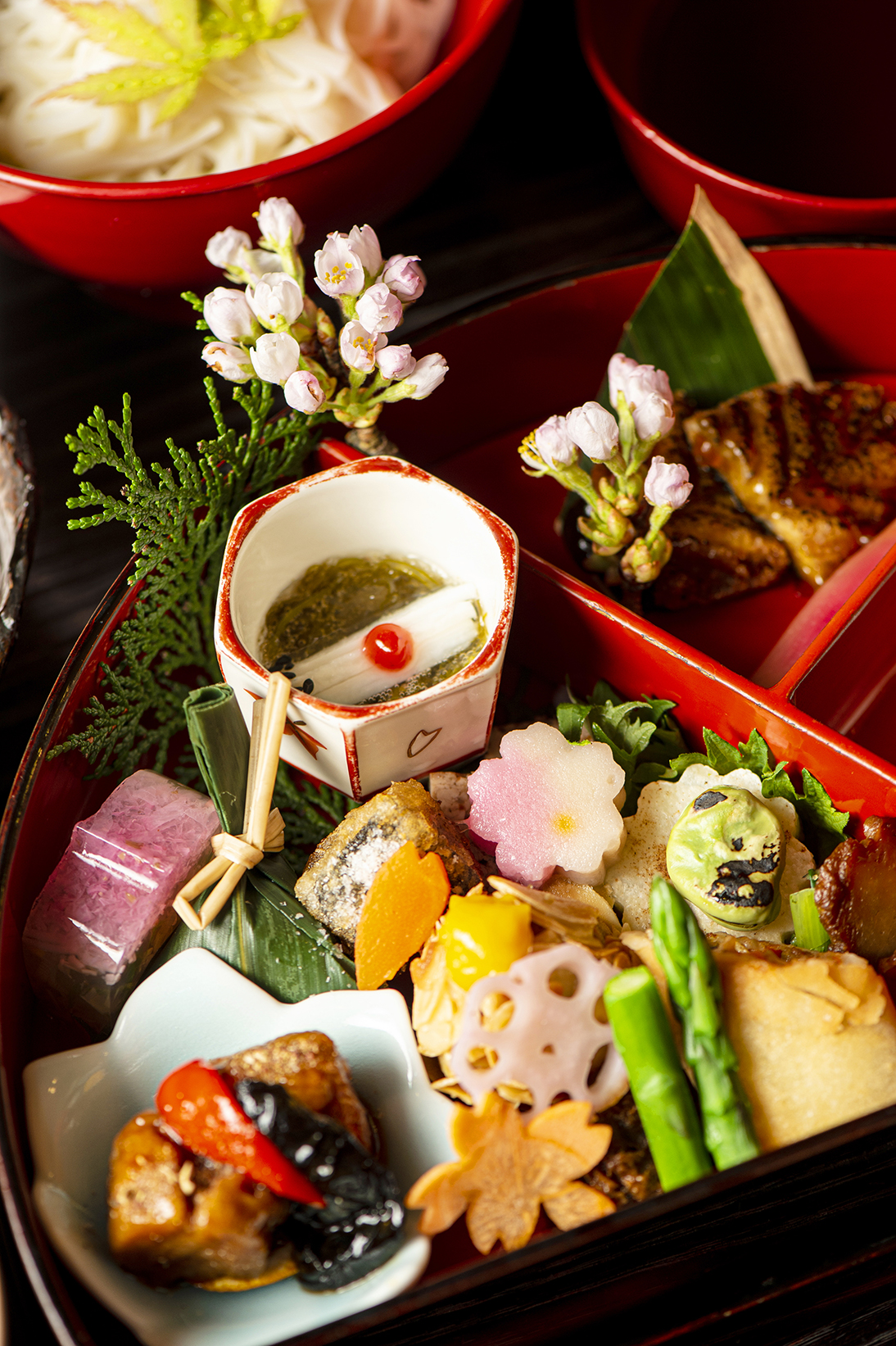
Weekday lunch "Fucha Bento box" comes with seasonal soup, Enkou-style bento, simmered dishes, buddhist fried vegetables, Inaniwa udon noodles, and seasonal fruits, all served individually.
Here, let me introduce the main dish, the "Enkou-style bento box". This bento is creatively crafted in a crescent-shaped box, packed with a vibrant assortment of dishes made from seasonal spring ingredients. This bento offers the spirit of hanami (cherry blossom viewing) even during a meal.
The side dishes include: Vinegar marinated dish with Nagaimo (Japanese long yam) and Mozuku Seaweed, resembling whitefish, Gisei Tofu (a tofu dish with vegetables processed to create a meat-like texture), Fuki Manju, a steamed bun wrapped in bamboo leaves, Assorted Dish with Cherry Blossom Flowers and Urui (one of the spring greens), Karaage-style burdock root (Gobo) shaped like old tree, Shigure-ni, a simmered dish made from nama-fu (raw wheat gluten) resembling sazae (shellfish), Fried Mixed Grains resembling the grains from a five-grain plant, and more.
There are approximately 15 different dishes including simmered, steamed, fried, and grilled dishes. Each of them is intricately prepared, and they feature creative presentations and unique touches that are characteristic of vegetarian cuisine. Choosing which one to start with, fills your heart with warmth and adds a sense of enjoyment to the meal.
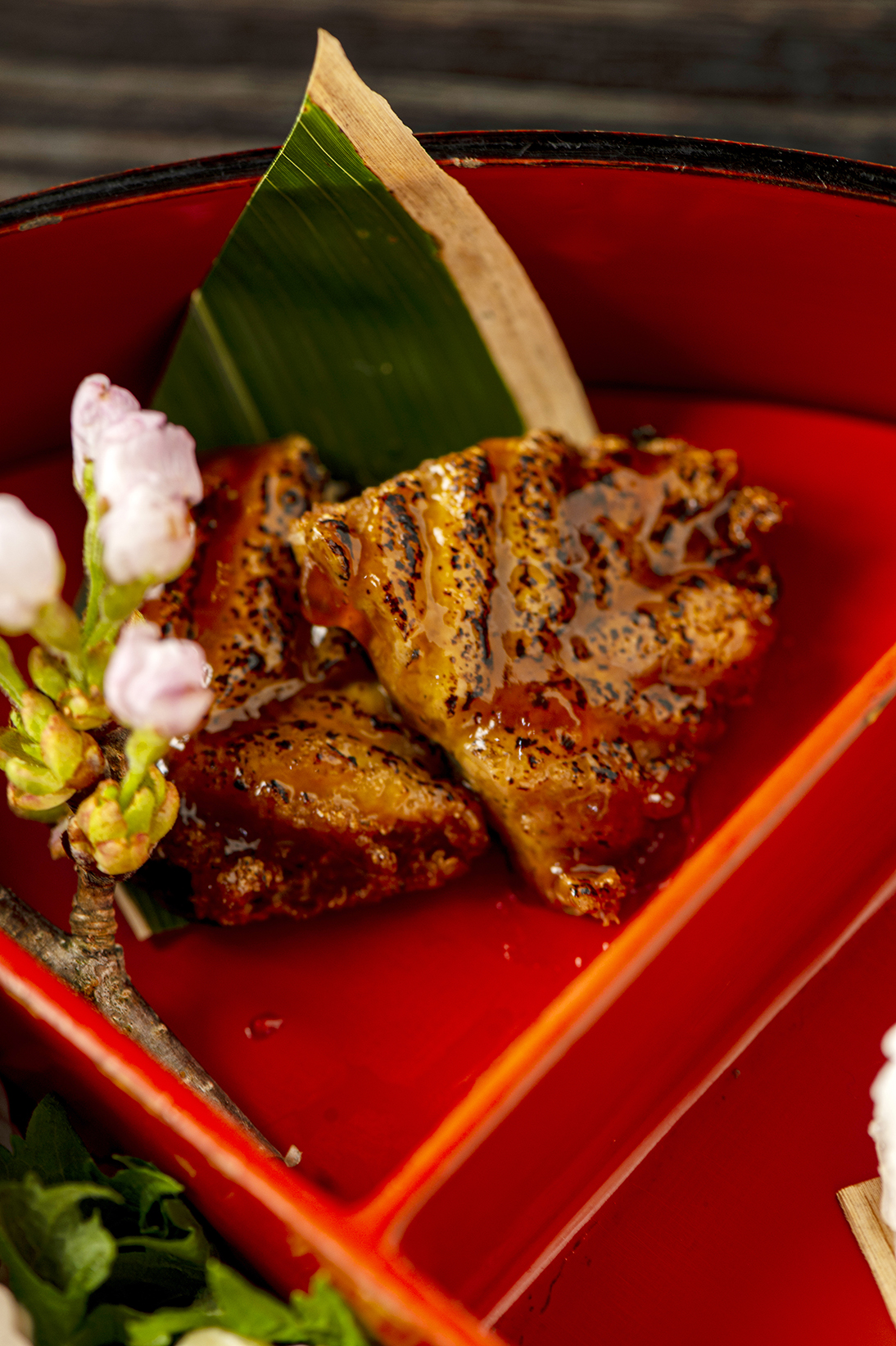
And in the upper middle section, there's the famous Unagi-Tofu (Eel and Tofu). This particular dish remains year-round while the contents of the Fucha Bento changes monthly to feature seasonal ingredients.
The appearance is reminiscent of a perfectly grilled eel with its enticing crispy texture and a glossy glaze from the sauce. It makes a satisfying sound as you bite into it, crispness, steamed-like softness, and even a subtle hint of the texture reminiscent of small bones. Additionally, there's a delicate fragrance of sansho pepper. Both in taste and texture, it truly captures the essence of grilled eel. It's so delightful that it's hard not to be impressed.
During the summer, seasonal dishes like "Tofu Eel Zaku-style" may be included as part of the course. However, knowing that you can enjoy this elegant specialty year-round as part of the Fucha Bento explains why many customers choose to visit specifically for this iconic dish.
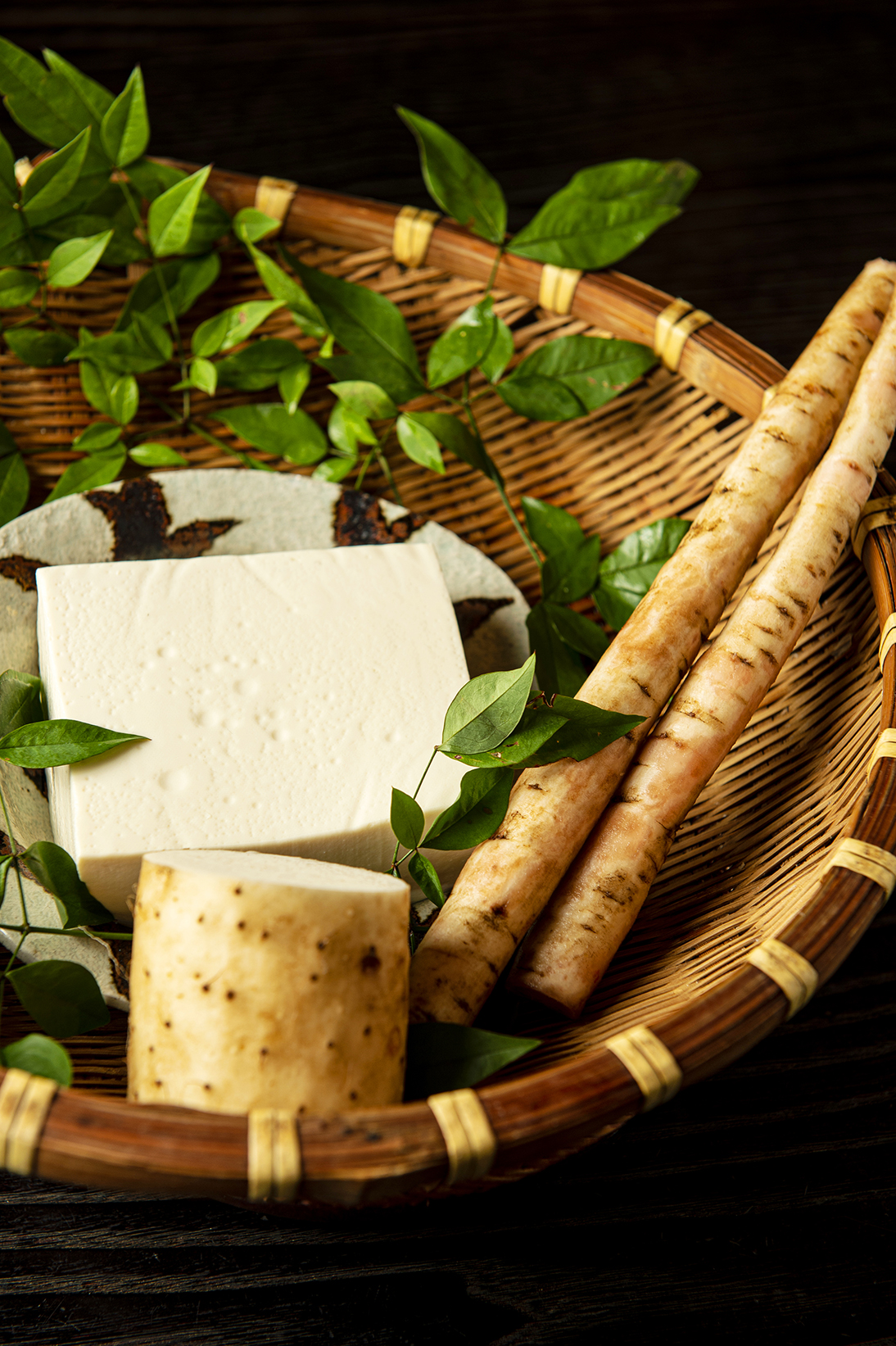
The "mock dishes" in vegetarian cuisine is created with extra effort and creative ingenuity to craft sophisticated dishes. Let's delve into the signature dish, Unagi-Tofu, and learn about its ingredients and preparation method.
Furukawa san has kindly taught us the methods.
"First, we start with draining and pressing Momen Tofu (firm tofu) and we add grated Kuwai (arrowhead) and burdock. We use only the fibers of burdock which are meant to mimic the small bones in eel. We also incorporate grated Jinenjyo (Japanese yam) as a binder for the mixture.
Next, we use nori seaweed to represent the eel's skin. We place the mixture onto the nori, shape it with a spatula, and then deep-fry it. Once it's fried to perfection, we finish it off by brushing it with sansho pepper soy sauce for an added layer of flavour."
You will be amazed by the dedication that goes into replicating every detail, from the tender, to the delicate "bones" and "skin." It proves the effort on craftsmanship and attention to detail.
This signature dish is from when Furukawa san did his training in Fucha cuisine at the age of 19, it was one of the dishes he mastered with determination to succeed as the second-generation owner. For the past 50 years since taking over the restaurant at the age of 20, it has been cherished as a beloved specialty of the restaurant's signature dish.
The entire restaurant is designed in the traditional Sukiya style (a building with tea ceremony room), featuring private dining rooms. You can relax and enjoy the flavours of the season. Why not try the Fucha Bento box with the unique dishes in a relaxing atmosphere?
Legacy from predecessor
Scenery in dishes
Scenery in dishes
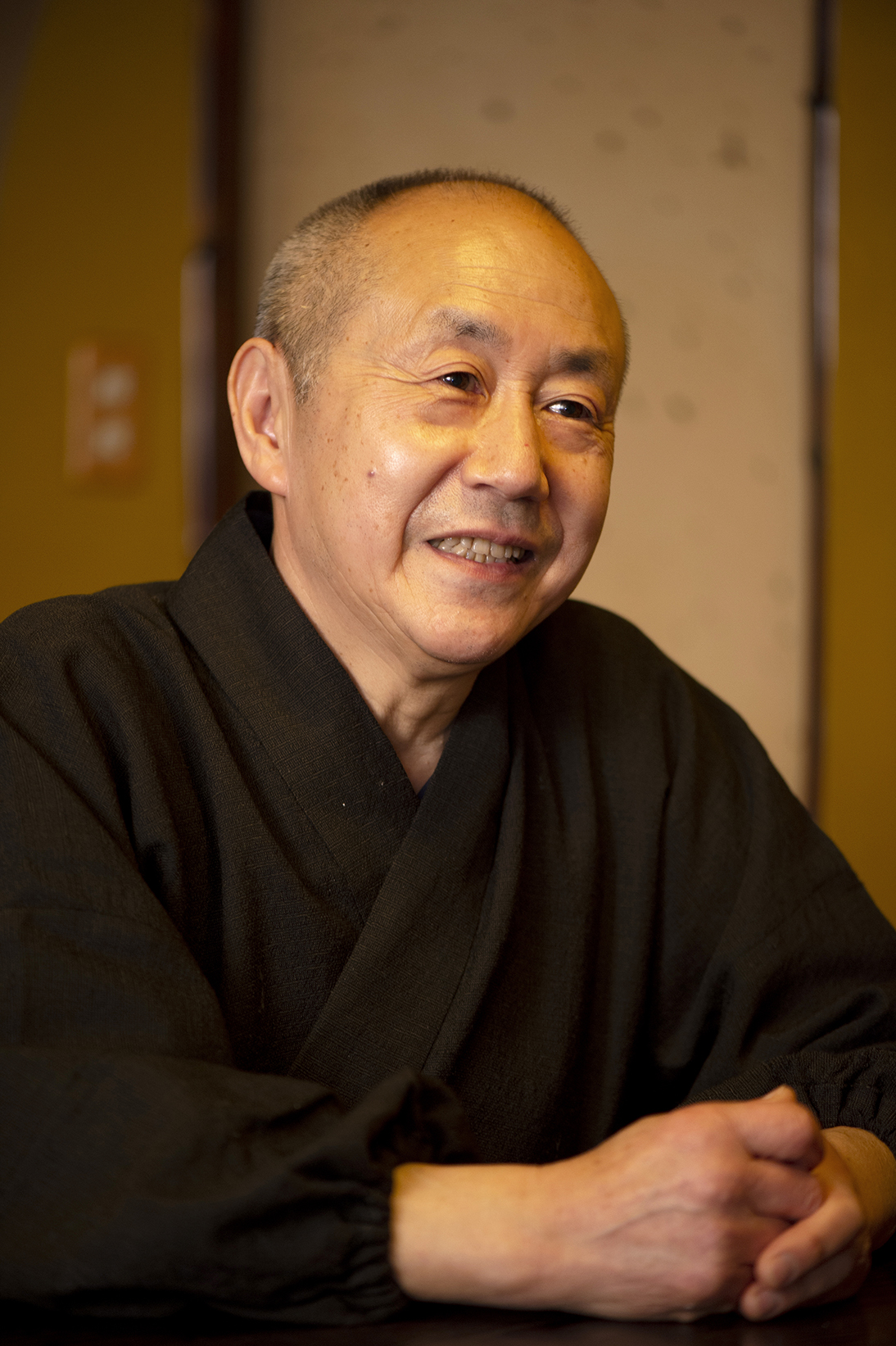
The story of "Fucha cuisine Bon" begins in 1959 (Showa era 34), 63 years ago. Furukawa san's mother Mieko san who hold a certificate as a nutritionist, renovated the house and established a restaurant.
The area around their home was a temple district, and the vegetarian cuisine and specially its health benefits caught her attention. Back then, there were three Fucha cuisine restaurants in the city, and now, "Bon" is the sole remaining establishment, which makes it rare.
"My mother chose Fucha cuisine which offers relatively more freedom in adhering to temple rules and using ingredients rather than other standard buddhist cuisine. Fucha cuisine, influenced by the Zen priest Ingen who introduced it to Japan, brought along with Fucha cuisine other aspects of Ming Dynasty culture such as green beans, bamboo shoots, lotus roots, watermelons, wooden fish, and sencha (green tea). In a Japan that was under a policy of sakoku (national isolation), these influences spread and the tea ceremony, which valued a spirit of freedom and refinement became more popular. Fucha cuisine is sometimes referred to as the Kaiseki cuisine of the tea ceremony."
Furukawa san speaks, choosing his words carefully and delivering them with a sense of calm. His attire in a simple, fresh Samue (monk's working clothes) appearance gives the image of a monk in some ways.
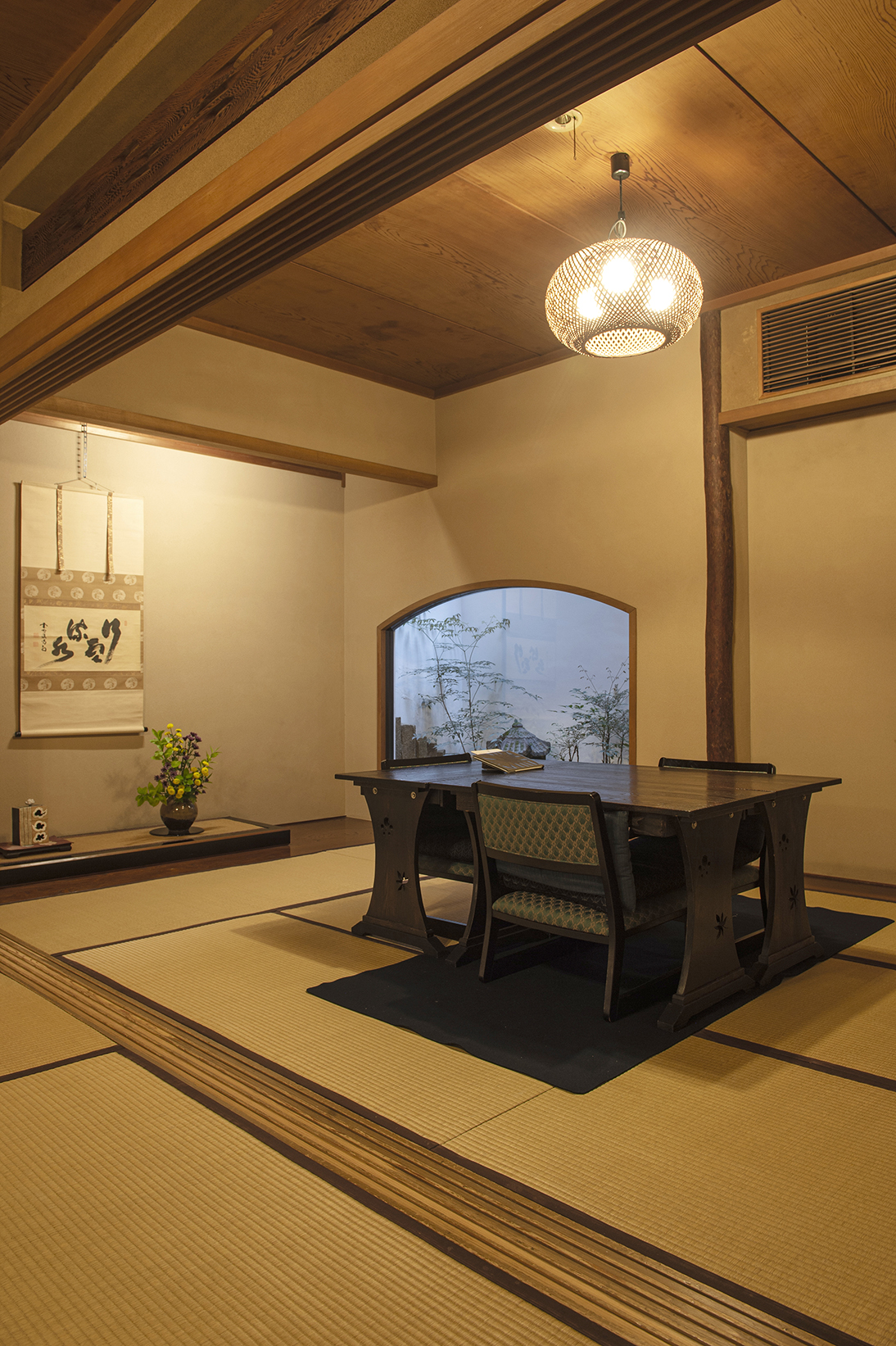
Fucha cuisine is known as a flexible style of eating; however it has its own set of protocols and etiquette. Traditionally, it is served in a communal style where four people sit around a table. The dishes are presented on large communual platters in Chinese-style serving. Each person then takes portions from the communal platters and serves themselves, where everyone enjoys the meal together, ensuring nothing is wasted.
However, they do not serve the dishes on communal platters at "Bon". Instead, each dish is individually portioned and served in separate plates. This distinctive style was influenced by the vision of the previous predecessor, Mieko san.
"My mother used to say that she wanted to create a landscape within a single plate. For example, in spring, she aimed to evoke the scenery of cherry blossoms in the dishes; in summer, the refreshing breeze; in autumn, the autumn leaves; and in winter, a snowy landscape. She wished to allow our guests to experience the seasonal beauty and landscapes of Japan through our cuisine. That's why we decided to serve each dish like Kaiseki cuisine, with careful plating and presentation, and I continue this tradition in my generation as well."
At "Bon," there are no restrictions such as for four people per table. They offer private dining rooms that can accommodate different group sizes, including tables for two. However, the rule is that everyone within the same group must enjoy the same course menu together. It's a wonderful opportunity to enjoy together.
The spirit of not wasting anything
Not even the scraps of vegetables
Not even the scraps of vegetables
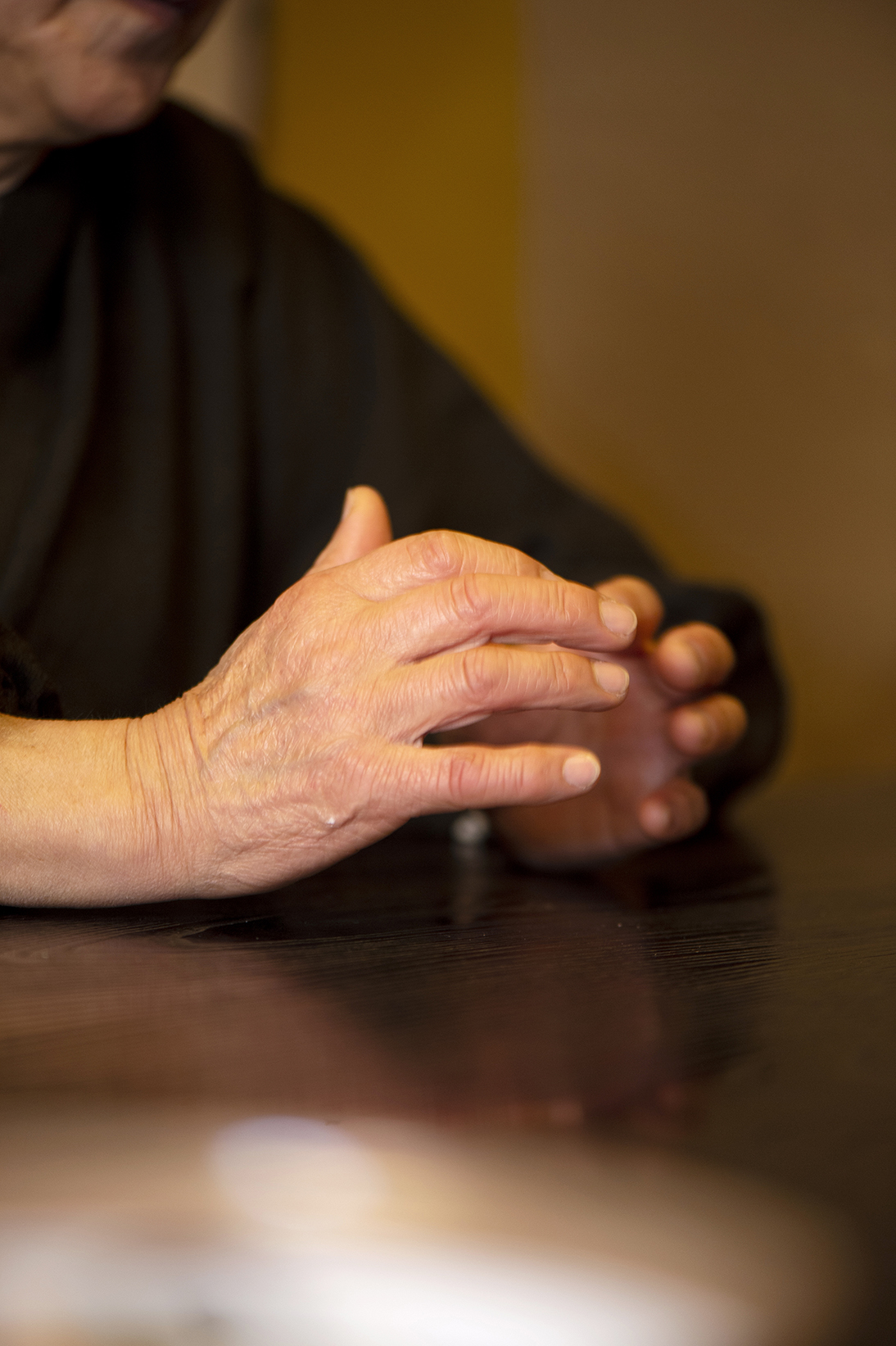
Furukawa san made the decision to take over the family business at the age of 19. During his study for the university entry exam, Furukawa san's father, who worked as a confectioner, supporting his wife, had a heart attack. This unfortunate incident made him decide to cancel his academic pursuits and take on the responsibility of running the family restaurant. Around the same time, there were plans to expand the restaurant, so he took the opportunity to dedicate himself to the training in Fucha cuisine.
Manpuku-ji in Uji, Kyoto, the head temple of the Oubaku buddhist sect, was founded by zen priest Ingen. The Oubaku sect is one of the Zen Buddhist sects, alongside Rinzai and Soto, and Fucha cuisine is the form of vegetarian cuisine served within this Oubaku sect.
"I called the head temple, but I was told that one must be entered the buddhist priesthood (tokudo) to undergo training there. Alternatively, I received guidance in Fucha cuisine from the head priest's wife at their personal temple. That's how I had the opportunity to learn Fucha cuisine."
Waking up at 3:30am in the morning, engaging in cleaning, zazen (meditation), learning the fundamentals of Fucha cuisine, including the preparation of ingredients, became a daily routine. I was fortunate to learn many of the signature dishes that represent Fucha cuisine over the course of just one year, such as "mock dishes" like Unagi-Tofu, "Unpen" made by finely chopping and stir-frying leftover vegetable scraps, and "Mafu," known as the original sesame tofu.
*Tokudo- the ceremony to receive formal ordination to enter into priesthood. It is known as a first step to become priest.
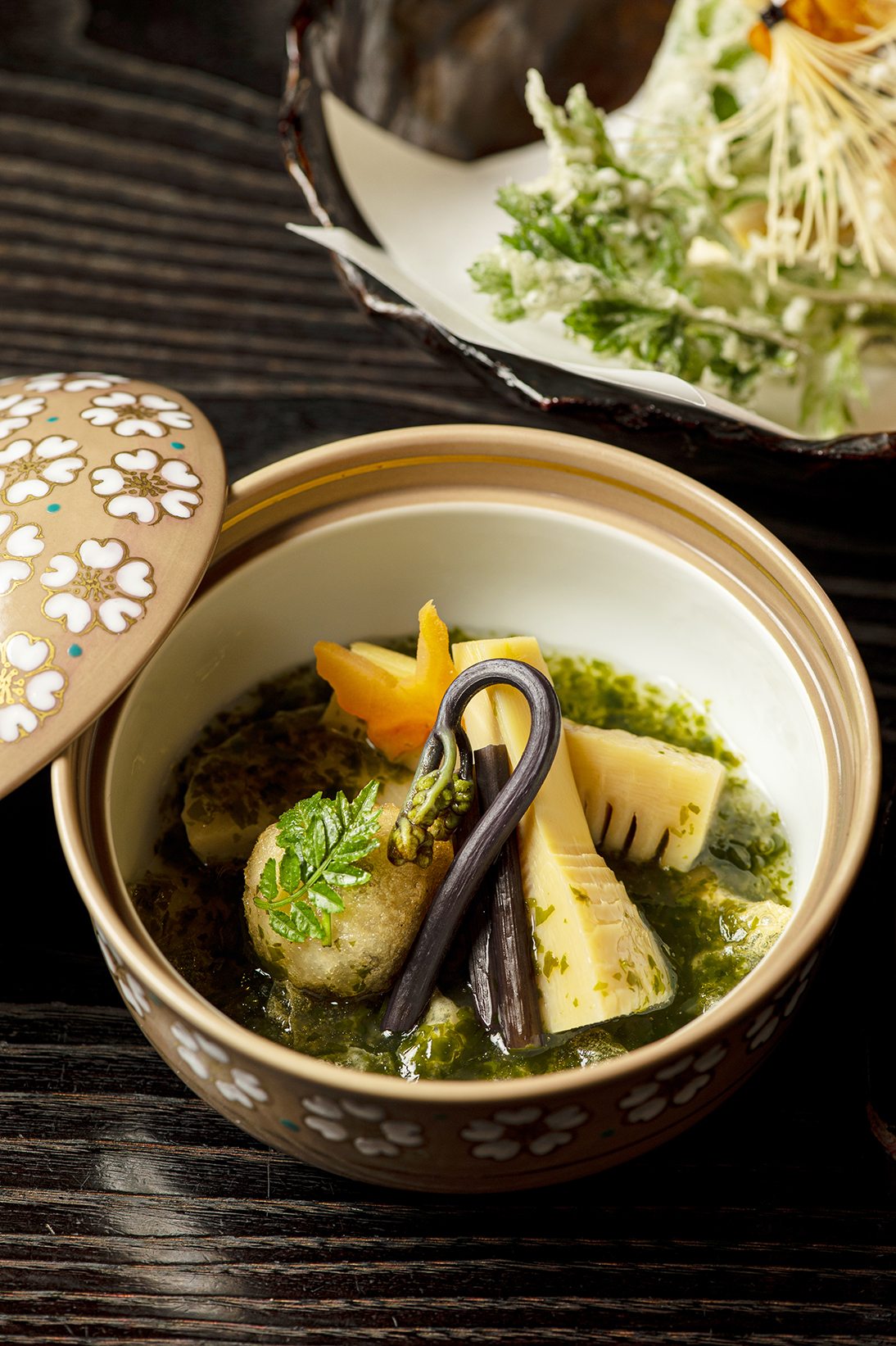
In this "Fucha Bento," the third dish of course also includes a simmered dish made from vegetable scraps. In April, it features simmered fresh bamboo shoots, warabi (bracken), kinome (leaf buds), Shinjo (Steamed minced fish and potato ball), and wakame seaweed – all ingredients that can express the sense of spring.
"We finely chop up leftover vegetables such as Shinjo (Steamed minced fish and potato ball), okara (soy pulp), Japanese yam, bamboo shoots, and the firm parts beneath warabi (bracken) and incorporate them into this dish. The principle of not wasting any ingredient, including vegetable scraps, is something I learned from my training. Vegetables have life."
As you hear the story of how the vegetable scraps that are often produced during cooking are transformed into a dish with the gentle sweetness of spring, it's a reminder of the sense of gratitude, receiving and appreciating the gift of life through food.
A little surprise, on the back of the chopstick wrappers, you'll find the "Five Contemplations Verse" (Gokan no ge) along with the word "gratitude." Take a moment to flip over the chopstick wrapper before your meal.
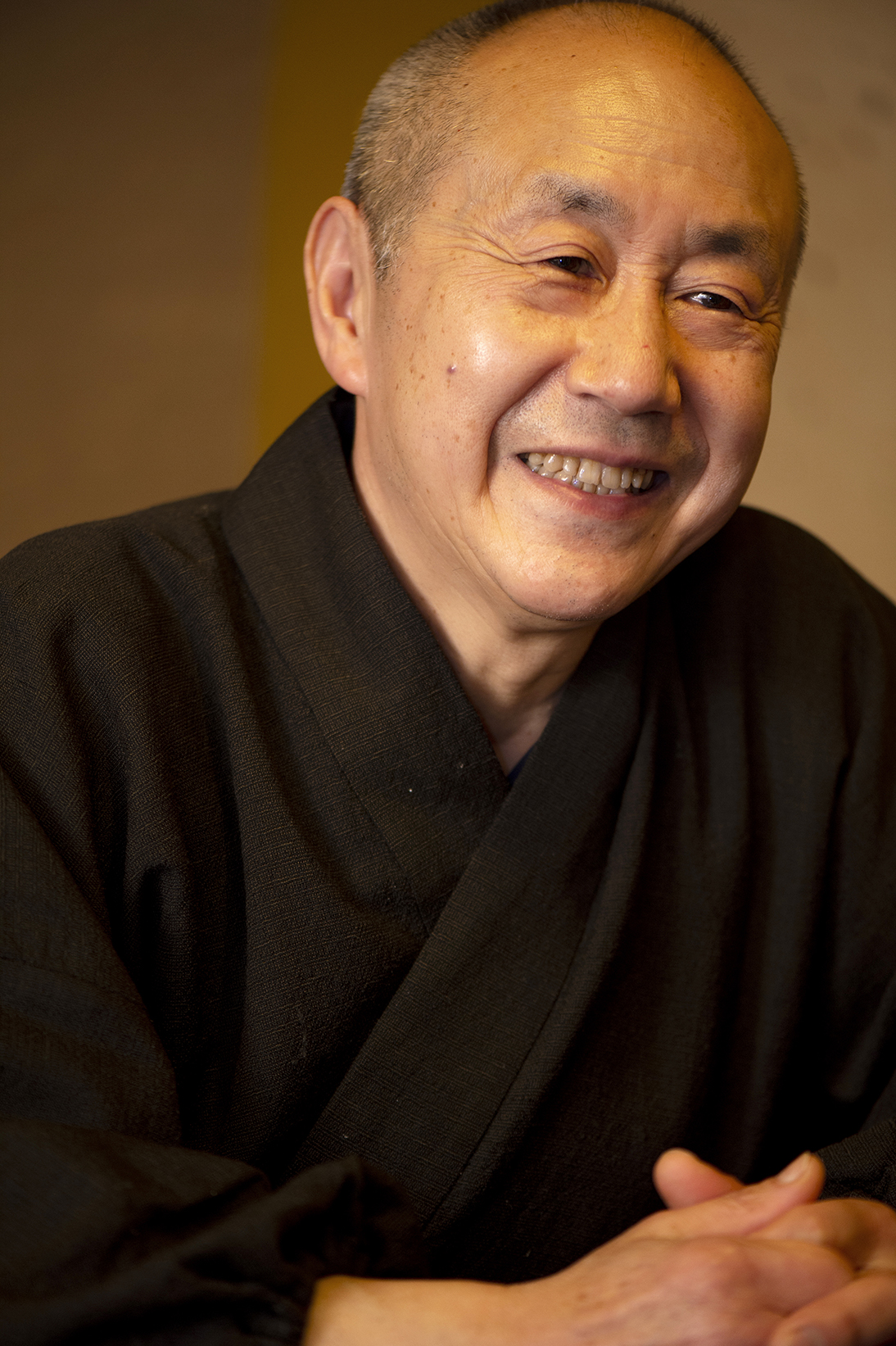
Even monks from overseas, such as China and Taiwan, visit "Bon" to experience the unique style of Fucha cuisine that combines the traditional Japanese style inspired, established by Furukawa san's mother with authentic elements, creating an original "Bon" style of Fucha cuisine.
"We are constantly inspired through interactions with overseas monks who favours our cuisine. I've noticed that in Chinese vegetarian cuisine, especially mock dishes, the level of skill in replicating the taste, aroma, and texture of meat like chicken or ham is high-level that it's often indistinguishable from the real. What we've been creating here at "Bon" has leaned more towards a Japanese-style, emphasizing seasonality and the natural flavours of ingredients. We also want to explore and incorporate more Chinese-inspired vegetarian dishes little by little."
The Fucha cuisine at "Bon," which crosses national and sectarian boundaries and continues to evolve, offers a unique dining experience. Why not visit and enjoy the warm hospitality of Mr. and Mrs. Furukawa with your loved ones?
PROFILE
Born in 1952, in Tokyo, Furukawa san received instruction in Fucha cuisine at the age of 19 from the wife of head priest of the Manpuku-ji (Manpuku Temple). He took over as the second-generation owner of the family business, "Fucha Cuisine Bon" at the age of 20. Married with his wife when he was 21, she was a classmate in middle school. Currently, he manages the family business along with his wife and his son and his son's wife. One of the guiding principles he holds, learned from his tea ceremony teacher since the fifth grade, is "No excess, no waste, no complacency" – a philosophy that guides his daily life.
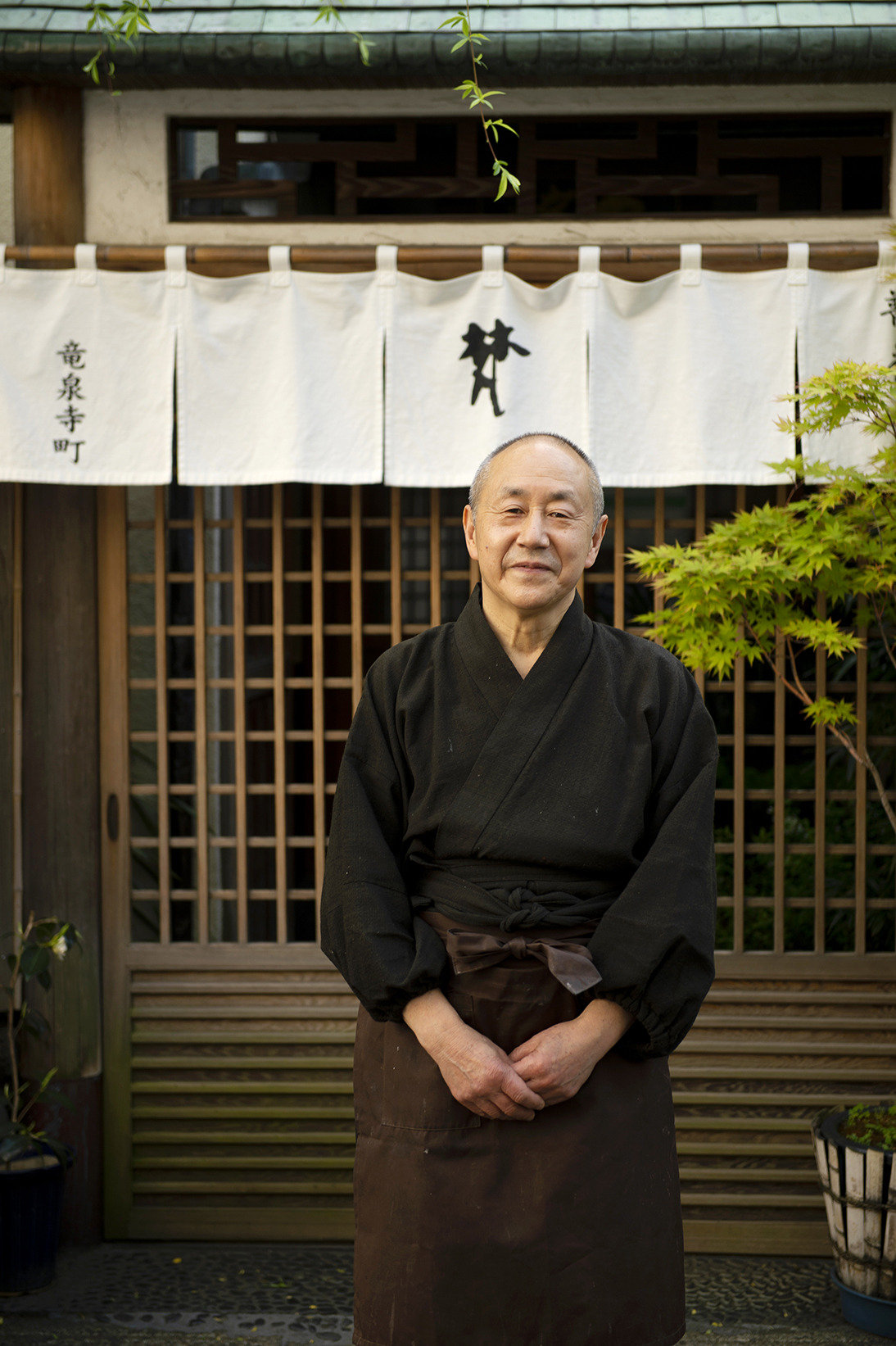
Chef's Recommended Vegetables
"My most interested ingredient is 'sesame'. Sesame is crucial for Buddhist cuisine. For example, there are sesame-tofu, and Rikyu dressing with its original umami, high-nutrient and is irreplaceable. Sesame is the seed of annual grass and 98% of sesame is from overseas. It is challenging to obtain sesame harvested in Japan."
